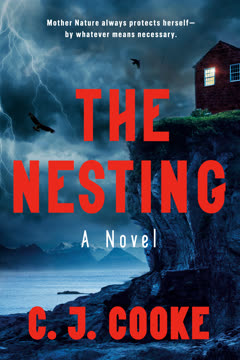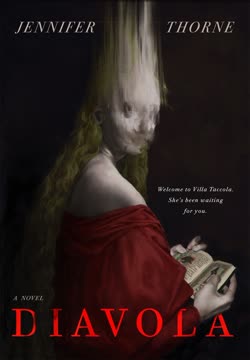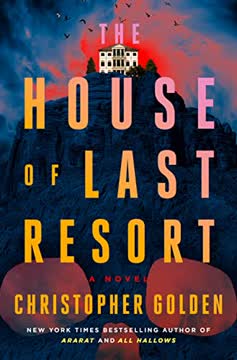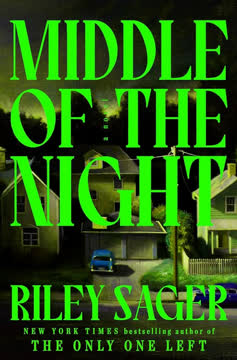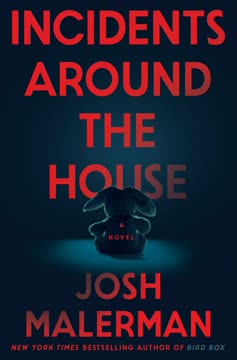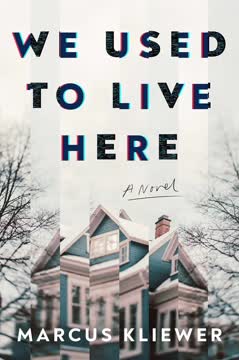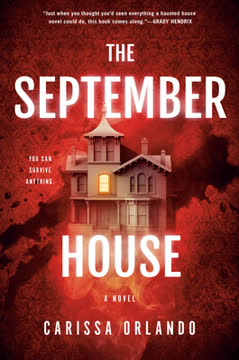Plot Summary
Shattered Beginnings, Stolen Identity
Lexi Ellis, reeling from a suicide attempt, job loss, and a brutal breakup, finds herself homeless and adrift. On a train, she overhears a conversation about a nanny job in Norway and, in a moment of desperation, steals the identity of Sophie Hallerton to apply. Lexi's decision is driven by a need for escape and survival, but also by a flicker of hope that she might find purpose. Her journey is marked by guilt, self-doubt, and a longing for belonging. The act of assuming another's life is both a lifeline and a burden, setting the stage for a story where truth, deception, and the search for self-worth collide in the shadow of trauma.
Arrival in the Norwegian Wilds
Arriving in Norway under her false identity, Lexi is swept into the Faraday family's world: Tom, the grieving architect; his daughters Gaia and Coco; and Maren, the enigmatic housekeeper. The setting is Granhus, a red house perched above a fjord, surrounded by ancient woods and the site of a new, ambitious build. Lexi is immediately overwhelmed by the demands of childcare, the strangeness of the landscape, and the palpable grief haunting the household after Aurelia's (Tom's wife) recent death. The isolation and wildness of Norway mirror Lexi's internal chaos, while the family's wounds and the house's secrets begin to seep into her own fragile psyche.
Haunted House, Haunted Hearts
Lexi's days are consumed by the relentless needs of Gaia and Coco, but nights bring terror: strange noises, ghostly apparitions, and the sense that the house itself is alive with sorrow. Gaia is plagued by nightmares and speaks of the "Sad Lady" with holes for eyes, a presence Lexi glimpses herself. The boundaries between reality and hallucination blur, echoing Lexi's mental health struggles. The house is a crucible for grief—Aurelia's absence is a wound that refuses to heal, and Lexi, an outsider and imposter, is drawn into the family's pain, feeling both responsible for and haunted by the children's suffering.
The Ghost in the Basement
Warned never to enter the basement, Lexi is eventually lured there by strange noises and the fear that Gaia is in danger. She experiences a terrifying encounter: the lights go out, the door slams shut, and a voice whispers "No." Something grabs her in the darkness. Rescued by the others, Lexi is shaken to her core. The basement becomes a symbol of buried trauma—both the family's and Lexi's own. The supernatural is not just a metaphor but a living force in the house, entwined with the land's history and the family's secrets, deepening Lexi's sense of dread and responsibility.
River's Wrath, Nature's Curse
Tom's architectural ambition has led him to divert a river to build his dream house, "Aurelia's Nest," on the cliff. This act of environmental violence unleashes a series of misfortunes: dead animals, angry wildlife, and a sense of being cursed. Local folklore—stories of the nøkk, a vengeful water spirit—echoes through the narrative. The river's disruption is mirrored in the family's unraveling, and Lexi comes to believe that the land itself is punishing them. The supernatural and ecological themes merge, suggesting that grief, guilt, and the desecration of nature are inextricably linked.
The Children's Grief
Gaia and Coco's suffering is at the heart of the story. Gaia's night terrors, her drawings of the Sad Lady, and her desperate attachment to Lexi reveal the depth of her trauma. Lexi, despite her imposture, becomes a lifeline for the girls, offering comfort and stability where none exists. The children's grief is raw and unprocessed, their mother's death shrouded in half-truths. Lexi's bond with them grows, blurring the lines between caregiver and family, and forcing her to confront her own capacity for love, healing, and sacrifice.
Secrets in the Attic
Lexi discovers Maren's secret trove in the attic: photographs, letters, and mementos of Aurelia, as well as clippings about Ingrid Olsen, a murdered woman who looks uncannily like Aurelia. Maren's obsession with Aurelia is revealed to be rooted in her own grief for her sister Ingrid. The attic is a space of memory and mourning, where the boundaries between past and present, self and other, blur. Lexi's discovery deepens the sense of unease and raises questions about identity, replacement, and the ways in which the dead haunt the living.
The Diary's Dark Confession
A red leather diary appears in Lexi's room, its pages filled with Aurelia's confessions of abuse at Tom's hands. The entries are harrowing: physical violence, terror, and the sense of being trapped. Lexi is horrified, torn between exposing Tom and protecting the girls. The diary's authenticity is later questioned, but its impact is profound—it reframes the narrative of Aurelia's death, casting suspicion on Tom and forcing Lexi to confront the possibility that the family she's come to love is built on a foundation of violence and lies.
The Elk and the Nøkk
Norwegian myths—especially the nøkk, a shapeshifting water spirit—permeate the story. Gaia's tales of the Sad Lady, the recurring presence of elk and ravens, and the strange happenings around the house all echo these legends. The supernatural is both literal and symbolic: a manifestation of grief, guilt, and the land's anger. Lexi's encounters with the Sad Lady become increasingly real and dangerous, culminating in a confrontation that blurs the line between myth and reality, and forces her to reckon with forces beyond her understanding.
The Build and the Breaking
The construction of Aurelia's Nest is plagued by accidents, financial ruin, and the growing sense that the project is cursed. Tom's obsession with the build becomes a form of self-punishment and denial, while Clive's pragmatism leads to ethical compromises—including the concealment of a body found on the site. The house, meant to be a sanctuary, becomes a site of destruction and moral decay. Lexi, caught in the crossfire, must decide where her loyalties lie and what she is willing to risk to protect the children.
The House That Shouldn't Be
Despite every warning, Aurelia's Nest is completed—a marvel of design, but haunted by the cost at which it was built. Lexi realizes she is no longer needed; her role as the girls' protector is ending. The sense of displacement and grief is overwhelming. The house stands as a monument to ambition, loss, and the failure to heed the warnings of nature and the heart. Lexi's journey comes full circle, forcing her to confront her own worth and the meaning of home.
The Nightmares of Aurelia
Aurelia's final days are revealed through diary entries and flashbacks: her mental health unravels, she is haunted by visions, and her relationships with Tom, Clive, and Derry fracture. Betrayal, guilt, and the supernatural converge, leading to her death—whether by suicide, accident, or something darker remains ambiguous. The truth is fragmented, filtered through trauma and the unreliability of memory. The house, the land, and the people are all complicit in her undoing.
The Body in the Earth
During construction, a body is discovered on the site. Clive, desperate to save the project, covers it with concrete, implicating Tom and deepening the moral rot at the heart of the story. The act is both literal and symbolic: the past cannot be buried without consequence. The discovery fractures the remaining trust among the adults and accelerates the unraveling of the household. Lexi, witnessing these events, is forced to confront the darkness that lies beneath the surface of every family, every home.
The Truth About Derry
Derry's role in Aurelia's death is revealed: driven by jealousy, obsession, and perhaps supernatural influence, she witnesses Aurelia drown and does nothing to save her. Derry's own mental state has deteriorated, and her actions are both a product of personal weakness and the malign influence of the nøkk. The revelation comes too late for redemption, but it reframes the narrative of blame and guilt, showing how easily love can curdle into destruction.
The Final Confrontation
After Lexi's deception is exposed, she is sent away. Derry, unraveling, drives Lexi toward the airport at breakneck speed, confessing her role in Aurelia's death. The car crashes into the fjord, and Lexi is pulled into the water by the Sad Lady/nøkk. In a moment of clarity, she remembers the power of naming in folklore and banishes the spirit by calling its name. The confrontation is both literal and symbolic: a reckoning with the forces of grief, guilt, and the past.
The Choice to Stay
Lexi survives the crash and is rescued by Gaia. Derry is lost to the river. The truth about Aurelia's death, the diary, and the supernatural is finally aired. Tom, Maren, and Lexi must reckon with their failures and losses. Lexi is offered a place in the new house—not as a nanny, but as a guest, a member of the family. The choice to stay is an act of hope and healing, a refusal to be defined by the past.
Letting Go, Letting Live
Lexi, Gaia, and Coco release Dora, the rescued raven, into the wild—a symbolic act of letting go. Lexi reflects on her own journey: from despair and self-destruction to connection and purpose. The act of setting Dora free mirrors Lexi's own need to move forward, to trust in the possibility of healing and new life. The house, once a site of trauma, becomes a place of renewal.
A New Nesting
The story ends with Lexi, no longer an imposter but a survivor, finding a place in the world. The house stands as a testament to endurance, love, and the possibility of redemption. The ghosts of the past are not banished, but acknowledged and integrated. Lexi's journey is one of transformation: from brokenness to belonging, from fear to hope. The nesting is not just of birds or families, but of the self—finding shelter, at last, in one's own skin.
Characters
Lexi Ellis (Sophie Hallerton)
Lexi is a woman on the edge, shaped by trauma, abandonment, and mental illness. Her decision to steal another's identity is both an act of desperation and a search for meaning. As she becomes "Sophie," she is forced to confront her own capacity for love, responsibility, and healing. Her relationship with Gaia and Coco is transformative, awakening a fierce protectiveness and a sense of self-worth she has never known. Lexi's journey is marked by guilt, impostor syndrome, and the constant fear of being unmasked, but also by resilience and growth. She is both haunted and a healer, a character whose psychological depth and vulnerability make her the emotional core of the story.
Tom Faraday
Tom is a man undone by loss, ambition, and guilt. His obsession with building Aurelia's Nest is both a tribute to his dead wife and a form of self-punishment. He is emotionally distant, prone to anger, and often blind to the needs of his children. The revelations of abuse in Aurelia's diary cast him in a sinister light, but his grief and moments of tenderness complicate the picture. Tom is a study in masculine fragility, denial, and the dangers of unchecked ambition. His relationship with Lexi is fraught, oscillating between trust and suspicion, and his ultimate reckoning is both a personal and moral crisis.
Gaia Faraday
Gaia is six years old, precocious, and deeply wounded by her mother's death. Her night terrors, drawings of the Sad Lady, and attachment to Lexi reveal a child struggling to process trauma. Gaia is both a victim and a guide—her openness to the supernatural, her questions, and her resilience drive much of the emotional arc. She is the heart of the family, her suffering a mirror for the adults' failures and hopes. Gaia's bond with Lexi is transformative for both, offering a glimpse of healing and the possibility of a new family.
Coco Faraday
Coco, the baby, is a source of light and laughter amid the darkness. Her needs are constant, her presence grounding. She represents both vulnerability and the possibility of renewal. Coco's milestones—her first steps, her laughter—are moments of grace in a story marked by loss. She is a living link to Aurelia, and her survival and happiness become a measure of the family's capacity to heal.
Maren Larsen
Maren is a complex figure: housekeeper, surrogate mother, and secret mourner. Her obsession with Aurelia is rooted in the loss of her own sister, Ingrid, whose murder haunts her. Maren's grief is channeled into caretaking, but also into secrecy and withdrawal. She is both a stabilizing force and a source of unease, her loyalties divided and her motives ambiguous. Maren's psychological depth lies in her struggle to find purpose and connection in the aftermath of loss, and her eventual confession is an act of vulnerability and release.
Aurelia Faraday
Aurelia is present through absence: her death is the story's catalyst, and her diary, photographs, and memories shape the narrative. She is both victim and enigma—her struggles with mental health, her experiences of abuse, and her descent into despair are revealed gradually. Aurelia is a figure of longing, beauty, and tragedy, her fate a warning about the costs of silence, denial, and the failure to protect. Her voice, through the diary, is a haunting counterpoint to the living characters' attempts to move on.
Clive Boydon
Clive is Tom's business partner, a man driven by financial survival and practical concerns. His willingness to cover up the discovery of a body, his complicity in the project's ethical lapses, and his own personal failings (including infidelity) make him a morally ambiguous figure. Clive is both a foil to Tom's idealism and a symbol of the compromises that erode integrity. His relationship with Derry is fraught, and his actions have far-reaching consequences for everyone involved.
Derry Boydon
Derry is an outsider longing for what she cannot have: motherhood, belonging, and the love she perceives in Aurelia's family. Her jealousy, sleepwalking, and eventual complicity in Aurelia's death are both personal failings and the result of supernatural influence. Derry is a study in envy, self-deception, and the destructive power of longing. Her final actions—driving Lexi off the road, confessing her role—are both a reckoning and a release, her fate a cautionary tale about the dangers of unacknowledged desire.
Ingrid Olsen
Ingrid, Maren's murdered sister, is a spectral presence in the story. Her resemblance to Aurelia, her tragic fate, and Maren's obsession with her memory create a web of loss and longing that shapes Maren's actions. Ingrid is both a symbol of the past that cannot be buried and a reminder of the ways in which trauma reverberates across generations. Her story is a parallel to Aurelia's, underscoring the themes of violence, vulnerability, and the search for justice.
The Nøkk / Sad Lady
The nøkk, or Sad Lady, is both a figure from folklore and a living force in the narrative. She represents the land's anger, the consequences of human hubris, and the inescapability of grief. Her appearances are terrifying, her influence malign, but she is also a symbol of the need to reckon with the past and to honor the dead. The nøkk's defeat—through the power of naming and the courage to confront fear—is both a literal and metaphorical victory, marking the possibility of healing and renewal.
Plot Devices
Dual Timelines and Unreliable Narration
The novel employs a dual timeline structure, alternating between Lexi's present-day experiences and Aurelia's past (through diary entries and flashbacks). This device creates suspense, gradually revealing the truth about Aurelia's death, Tom's character, and the family's secrets. The use of unreliable narration—Lexi's mental health struggles, the ambiguity of supernatural events, and the questionable authenticity of the diary—keeps the reader off-balance, mirroring the characters' own uncertainty. The structure allows for foreshadowing, misdirection, and the slow unspooling of revelation, heightening emotional impact and thematic resonance.
Folklore and Supernatural Elements
Norwegian folklore—especially the nøkk, elk, and ravens—permeates the narrative, serving as both literal supernatural threats and metaphors for grief, guilt, and the consequences of violating nature. The supernatural is never fully explained, maintaining a sense of ambiguity and dread. The power of naming, the blurring of dream and reality, and the recurrence of mythic motifs create a sense of inevitability and fate. These elements are used to externalize psychological states, making the house and landscape active participants in the story's drama.
The Haunted House and Environmental Horror
Granhus and the new house, Aurelia's Nest, are more than backdrops—they are living, haunted entities. The disruption of the river, the desecration of the land, and the house's history of loss and violence create an atmosphere of environmental horror. The setting reflects and amplifies the characters' inner turmoil, making the personal political and the psychological ecological. The house is a crucible for transformation, destruction, and, ultimately, renewal.
The Found Diary and Hidden Evidence
The appearance of Aurelia's diary is a classic plot device: a hidden document that reframes the narrative and forces characters to confront uncomfortable truths. The diary's authenticity is later questioned, adding a layer of ambiguity and inviting the reader to consider the unreliability of memory, testimony, and written records. The device is used to create suspense, drive character decisions, and explore themes of trust, betrayal, and the limits of knowledge.
Foreshadowing and Symbolism
The novel is rich in foreshadowing: early references to the river, the elk, and the nøkk anticipate later events. Symbolism abounds—the river as grief, the house as psyche, the raven as transformation. The repetition of motifs (water, eyes, nests) creates a sense of narrative symmetry and inevitability. The use of children's drawings, dreams, and folklore stories within the text serves both as foreshadowing and as a means of deepening psychological and thematic complexity.
Analysis
In a modern context, The Nesting is a powerful meditation on trauma, grief, and the search for belonging, set against the backdrop of environmental crisis and the enduring power of myth. The novel interrogates the ways in which personal and ecological violence are intertwined: the desecration of the land mirrors the wounds within the family, and the supernatural is both a manifestation of psychological pain and a warning about the costs of ignoring nature's limits. The story's use of unreliable narration, dual timelines, and ambiguous supernatural elements reflects the complexity of memory, truth, and healing. Lexi's journey—from brokenness and imposture to connection and self-acceptance—offers a nuanced portrait of recovery, emphasizing the importance of chosen family, courage, and the willingness to confront the past. The novel's lessons are clear: healing requires honesty, the dead must be honored, and the land demands respect. In a world marked by loss and uncertainty, The Nesting suggests that hope is found not in denial or escape, but in the hard work of facing what haunts us, caring for one another, and building new nests from the ruins of the old.
Last updated:
Review Summary
The Nesting is a gothic thriller set in Norway, blending elements of Nordic folklore, supernatural horror, and domestic suspense. Readers praised its atmospheric setting and creepy ambiance, though some found the plot predictable or slow-paced. The story follows Lexi, who impersonates a nanny to care for two children whose mother recently died. Many reviewers enjoyed the folklore aspects and environmental themes but felt the characters lacked depth. Overall, opinions were mixed, with some finding it captivating while others felt it fell short of expectations.
